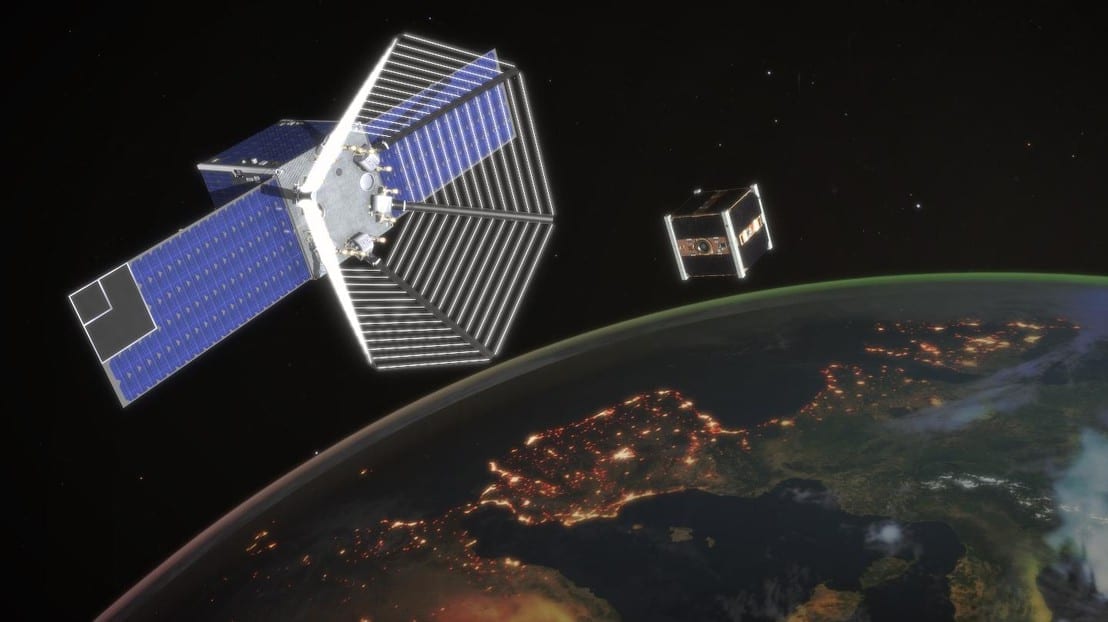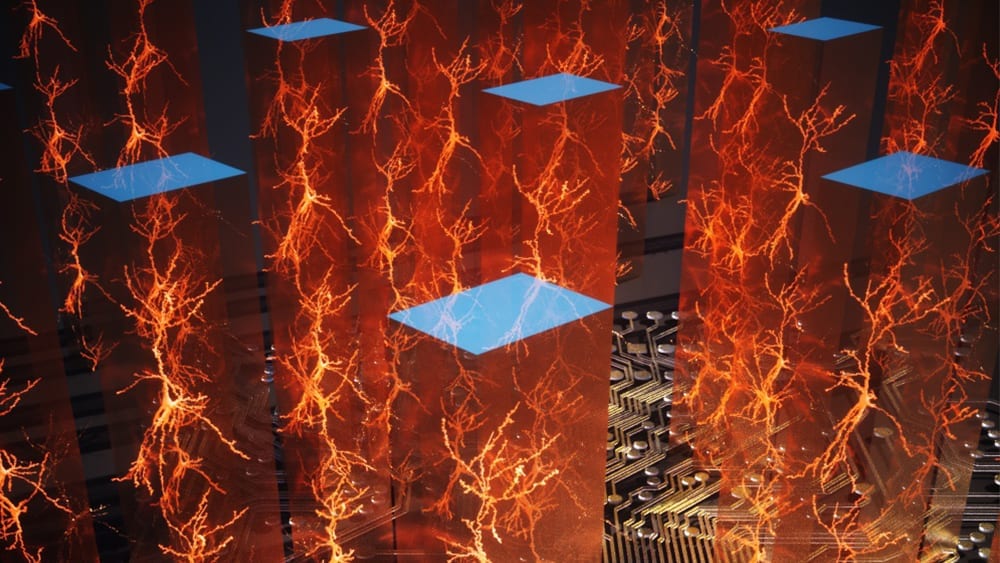
Examples of light curves extracted from the survey images for faint debris tracks. Owing to the strategies employed by the astronomers, stars appear as near-vertical streaks in the image thumbnails, while the objects of interest manifest as short trails. A significant degree of brightness variation can be seen for both examples. Credit: Blake et al., ASR, 2020
· Survey of geosynchronous orbital debris led by University of Warwick found over 75% of debris detected could not be matched to known objects in public satellite catalogues
· Astronomers are calling for more regular surveys with large telescopes to help quantify the risks posed to active satellites
· Many of the objects detected show optical signatures of tumbling, providing insight into the dynamical evolution of debris within the geosynchronous environment
· First instalment of DebrisWatch, an ongoing collaboration between the University of Warwick and the Defence Science and Technology Laboratory (UK)
University of Warwick astronomers are warning that orbital debris posing a threat to operational satellites is not being monitored closely enough, as they publish a new survey finding that over 75% of the orbital debris they detected could not be matched to known objects in public satellite catalogues.
The astronomers are calling for more regular deep surveys of orbital debris at high altitudes to help characterise the resident objects and better determine the risks posed to the active satellites that we rely on for essential services, including communications, weather monitoring and navigation.
The research forms part of DebrisWatch, an ongoing collaboration between the University of Warwick and the Defence Science and Technology Laboratory (UK) aiming to provide a fresh take on surveys of the geosynchronous region that have been conducted in the past. The results are reported in the journal Advances in Space Research. The research was part-funded by the Science and Technology Facilities Council (STFC), part of UK Research and Innovation, and was supported by the Royal Society.
This survey was optimised to search for faint debris, objects that are too small or poorly reflective to be regularly monitored and recorded in publicly available catalogues. The US Strategic Command (USSTRATCOM) maintains the most complete public catalogue of space objects, using its global Space Surveillance Network (SSN) comprising over 30 ground-based radars and optical telescopes, alongside 6 satellites in orbit. The SSN is able to monitor high-altitude objects down to roughly 1 metre in diameter. Although certain residents of the geosynchronous region are often referred to as ‘stationary’, collisions can still occur with relative velocities of kilometres per second. With this in mind, even small objects could cause a lot of damage to an active satellite.
Images from the survey were analysed using a custom software pipeline designed to pick out candidate debris objects and investigate their brightness over time. The resulting ‘light curves’ contain a wealth of information about the objects themselves, including their shape, surface properties and attitude, but are also affected by other factors like viewing geometry and atmospheric interference. Disentangling these components remains a very difficult task, and large quantities of high-quality data will be key to developing and refining the necessary techniques.
The astronomers focused their survey on the geosynchronous region, located roughly 36,000 kilometres above the Equator, where satellites orbit with a period that matches the Earth’s rotation. Far above the outermost layer of the Earth’s atmosphere, there are no natural mechanisms (like atmospheric drag) to induce orbital decay, so debris generated in the vicinity of the geosynchronous region will remain there for a very long time indeed.
To help them uncover faint debris, the astronomers made use of the Isaac Newton Telescope on the Canary Island of La Palma, which has a large 2.54 m aperture, allowing it to collect photons of light over a large area. They used an optimised strategy to ensure that the sunlight reflecting off of candidate objects would fall within the same pixels of the camera, to increase their chances of being detected. Strips of sky were scanned above, along and below the geostationary belt, where most of the operational geosynchronous satellites reside.
The majority of the orbital tracks detected by the astronomers had brightnesses corresponding to roughly 1 metre or less. Sure enough, over 95% of these faint detections failed to match with a known object in the publicly available USSTRATCOM catalogue, as they are too faint to be regularly and reliably monitored by the SSN. When the researchers included all their detections – including those above and below 1m – over 75% failed to match.
The Latest Updates from Bing News & Google News
Go deeper with Bing News on:
Orbital debris
- Jupiter Could Cause A ‘Shooting Starburst’ From Halley’s Comet This Weekend
Thanks to Jupiter's influence, up to 50 “shooting stars” could be visible during this year’s moonless peak of the Eta Aquariids meteor shower in 2024. Halley’s comet is the cause.
- Missing Satellite Found After 25 Years of Being Lost in Space
The Infra-Red Calibration Balloon (S73-7) satellite was part of the United States Air Force’s Space Test Program. After launching on April 10, 1974, a large reconnaissance satellite, called KH-9 ...
- The Eta Aquariid meteor shower: When is it and what to expect?
Meteors will be streaking across the sky as Earth passes through dusty debris in space left by Halley's Comet in the annual Eta Aquariid meteor shower, with peak activity in early May.
- Explainer-The Eta Aquariid meteor shower: When is it and what to expect?
Meteors will be streaking across the sky as Earth passes through dusty debris in space left by Halley's Comet in the annual Eta Aquariid meteor shower, with peak activity in early May. Here is an ...
- Space debris on the rise, ISRO performed record 25 collision-avoidance manoeuvres in 2023
ISRO report highlights 'growing congestion', with number of objects sent to space having increased by 24% in 2023 from previous year. India aims to have debris-free space missions by 2030.
Go deeper with Google Headlines on:
Orbital debris
[google_news title=”” keyword=”orbital debris” num_posts=”5″ blurb_length=”0″ show_thumb=”left”]
Go deeper with Bing News on:
Space debris
- This SpaceX Veteran's 'Tony Stark' Technology Aims to Tackle the Space Junk Problem
Portal Space Systems came out of stealth this week with more than $3 million in funding to build a spacecraft capable of rapidly moving satellites.
- Japanese aerospace company captures an actual picture of space debris
Space debris is a growing problem, so companies are working on ways to mitigate it. A new satellite called ADRAS-J was built and launched to demonstrate how a spacecraft could rendezvous with a piece ...
- Paving the way for a novel approach to space debris removal
A company in Japan has succeeded in sending a satellite close to a piece of an abandoned rocket -- space debris that has been in orbit since 2009. This is the first step towards getting rid of the ...
- Space Junk Startup Astroscale To IPO On Tokyo Stock Exchange
Astroscale Holdings, the parent company of several international space junk removal startups, has received approval from the Tokyo Stock Exchange to list its shares in an initial public offering of ...
- ‘We are in the process of sending NASA our claim’: Space junk smashed into a Florida man’s home and caused over $15K in damages — does insurance have to pay for it?
‘We are in the process of sending NASA our claim’: Space junk smashed into a Florida man’s home and caused over $15K in damages — does insurance have to pay for it? Space junk is the new frontier in ...
Go deeper with Google Headlines on:
Space debris
[google_news title=”” keyword=”space debris” num_posts=”5″ blurb_length=”0″ show_thumb=”left”]










